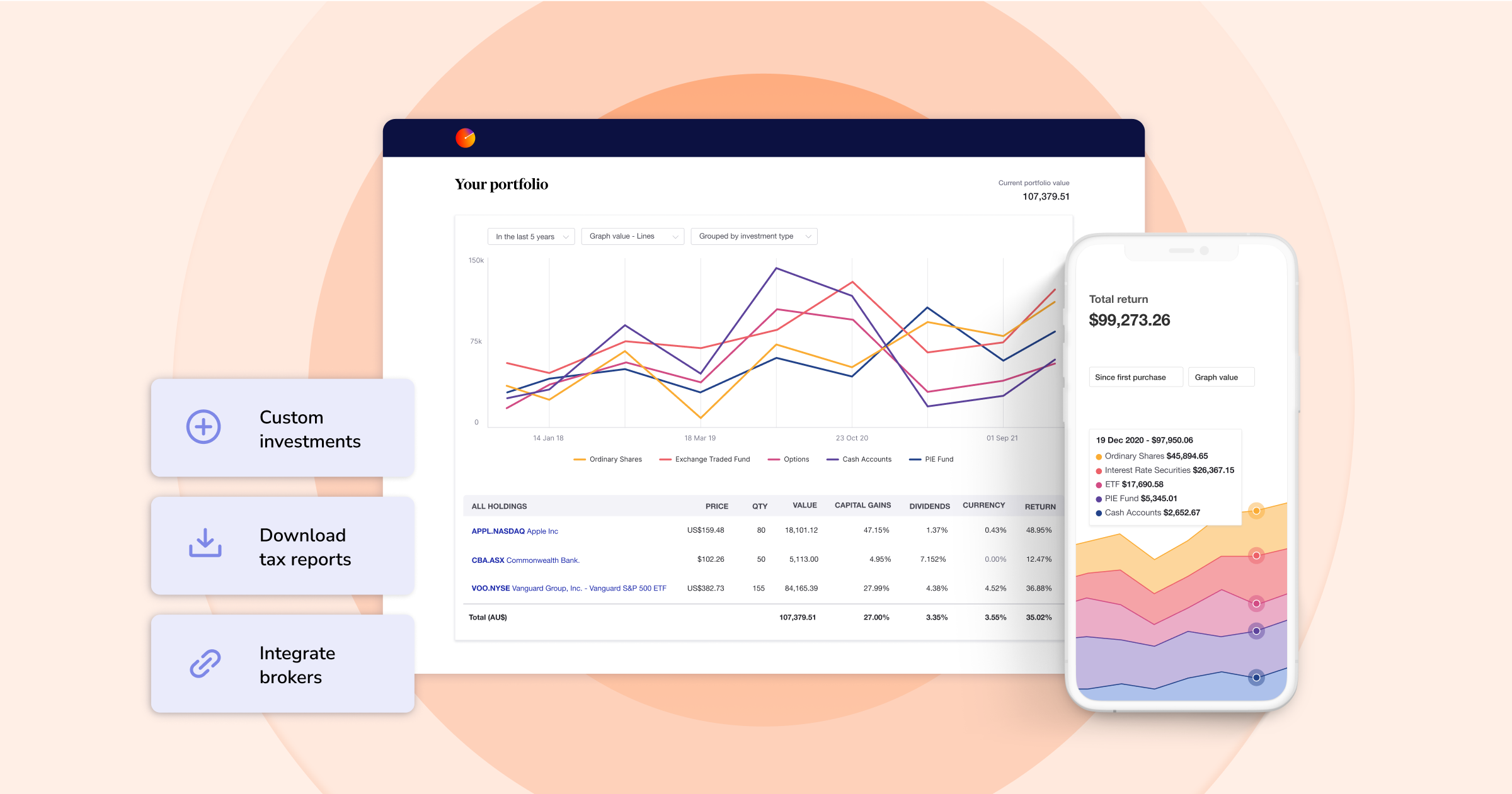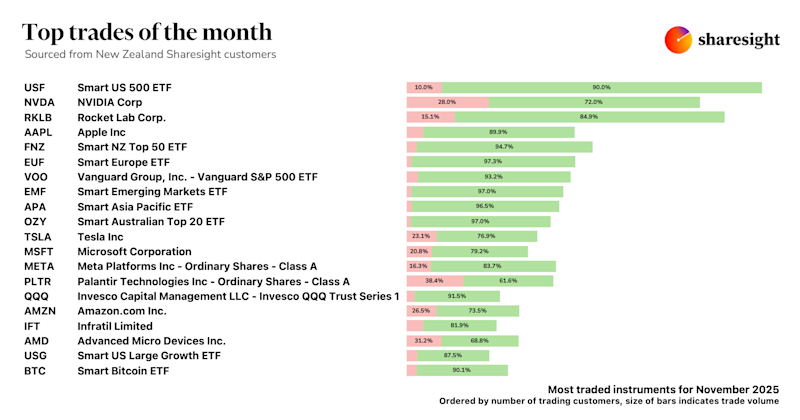Key takeaways from SIAA 2025: Trends, insights & industry highlights
Disclaimer: This article is for informational purposes only and does not constitute a specific product recommendation, or taxation or financial advice and should not be relied upon as such. While we use reasonable endeavours to keep the information up-to-date, we make no representation that any information is accurate or up-to-date. If you choose to make use of the content in this article, you do so at your own risk. To the extent permitted by law, we do not assume any responsibility or liability arising from or connected with your use or reliance on the content on our site. Please check with your adviser or accountant to obtain the correct advice for your situation.
Last month, we had the pleasure of attending and exhibiting at SIAA’s 2025 conference in Sydney. The event brought together professionals from across the investment industry to share insights, discuss market trends, and explore the future of financial advice. From keynote speeches to panel discussions, it was a valuable opportunity to connect with peers and stay across key developments in the sector.
For those who were unable to attend, here is a summary of some of the standout sessions and takeaways from the event.
 The Sharesight team at SIAA 2025
The Sharesight team at SIAA 2025
Global economic outlook
(By Luci Ellis, Chief Economist at Westpac Banking Group)
China’s outlook and its implications for Australia
China remains Australia's largest trading partner and a more significant driver of Australian economic outcomes than the US. The current forecast suggests China will achieve its official 5% growth target in 2025 — an outcome not fully priced in by financial markets. Indicators such as the Australian dollar and commodity prices reflect some market scepticism. If growth targets are met, a repricing of risk and opportunity is likely to follow.
European markets, particularly in defense-related equities, have performed strongly. In some jurisdictions, defense is now being integrated into ESG frameworks. Investor sentiment toward Europe has evolved, with increasing recognition of growth and competitiveness in economies outside the core euro area — especially in Eastern Europe.
China’s structural transition and the steel market
China has likely reached the point of "peak steel" on a per capita basis. Historical data from various advanced economies shows that steel consumption per capita stabilises once a certain level of GDP per capita is reached. Research from the Reserve Bank of Australia (2017) anticipated this development. Since around 2020–2021, Chinese steel production has plateaued, following two decades of rapid expansion.
For Australia, this implies limited further upside in iron ore export volumes. However, iron ore will remain a substantial source of revenue, provided Chinese GDP growth remains near current targets (5.0% in 2025, 4.6% in 2026). The export value remains significant, even as volume growth flattens.
Australia’s exposure to US tariffs
Australia falls under the 10% tariff category, which is comparatively moderate. The US, while among Australia's top five export destinations, accounts for only about 8% of total exports. A significant portion of these are services. For example, software licensing accounted for $7.5 billion in export earnings in 2024 — surpassing many traditional goods exports. Much of this is directed to the US and is not subject to tariffs.
The overall impact of US tariffs on Australian GDP is therefore expected to be limited. Growth forecasts have been modestly revised, but no substantial downturn is anticipated.
Inflation and monetary policy
Recent inflation data suggests that price pressures, particularly in housing, may be easing. Rent inflation rose following the reopening of borders post-COVID, due to a surge in migration. This has now started to unwind. Structural constraints in the construction sector limited the ability to respond rapidly with new housing supply.
The RBA has adopted a cautious approach to rate cuts, prioritising a return to its 2–3% inflation target range. However, the inflation trajectory appears to support further easing. Private sector demand remains weak, and labour market tightness is concentrated in care-related sectors, which are unlikely to sustain current growth levels indefinitely.
Looking ahead to 2026
Outcomes for 2026 will depend heavily on global trade dynamics and the medium-term effects of the current trade policy shifts. While initial tariff announcements were concerning, revised terms suggest a lower magnitude of impact. Nonetheless, global growth and commodity prices will be important variables for Australia’s outlook.
Domestically, the recent federal election result has not significantly altered fiscal policy expectations. No major contractionary measures are anticipated. The key uncertainty is the extent to which private sector demand will offset a projected decline in public spending. Consumption growth has been subdued, and the pace of recovery remains uncertain.
Platform evolution: keeping the adviser front of mind
(By Andy Robertson, Director & Chief Innovation Officer at Chelmer; Jason Entwistle, Director Strategic Development at Hub24; Stuart Holdsworth, Founder of Financial Simplicity; Edwina Maloney, Group Executive for Platforms at AMP)
In the early days, investment platforms were largely paper-based systems, focused on handling applications, redemptions and reporting. However, with advances in technology and the internet, platforms have become much more integrated into the workflows of advice practices.
- Core purpose: productivity and integration: At their heart, platforms are productivity tools. They help financial advisors implement advice efficiently — managing portfolio setup, account creation, trading and settlement. Increasingly, platforms are focusing on seamless data sharing, automation and client experience to further enhance productivity.
- Choice and customisation for practices: As many advice practices move away from large institutional ownership, they often lack the resources to build custom tech solutions. This makes it crucial for platforms to offer flexibility and integration options. Smaller firms often prefer an all-in-one solution to reduce complexity, while larger firms tend to adopt best-of-breed tools, even if that means dealing with multiple systems and integration challenges.
- Reality of multi-platform usage: Despite the ideal of a single platform solution, most advisors still use more than one. The average is around 2.2 platforms per advisor. This is partly due to legacy systems, but also reflects the need to serve different client segments with tailored solutions. While there’s a push to simplify and consolidate, the industry acknowledges that some degree of multi-platform use is likely to persist.
- The complexity of integration: Transitioning clients between platforms is difficult. Even within a so-called "single platform" world, advisors still use various tools—email, CRMs, AML/KYC systems—making deep integration critical. Many advisors are overwhelmed by the number of systems and screens they must learn to use across platforms. This inefficiency is a key pain point that needs addressing.
- A new wave of technology: There is optimism that the next generation of technology—including low-code and customisable tools—will enable practices to build their own applications, better supporting their unique workflows. Platforms should focus on enabling this environment rather than trying to build everything themselves.
- Separation of core and add-on capabilities: There’s a growing recognition that the core functions of platforms—custody, settlement, execution, compliance—can be separated from value-add tools like portfolio rebalancing or document generation. This modular approach could allow tech providers to better support each other and build more flexible solutions.
- The shift toward platform consolidation: While multi-platform use remains common, the trend may be reversing. A year ago, 80% of advisors used one platform; today, that figure is down to 16%. However, private ownership and the influence of private equity—focused on margin and efficiency—may push the industry back toward fewer platforms. This trend has already played out in the UK, where a significant portion of advice firms are now private equity–owned.
- Innovation in retirement solutions: Platforms are beginning to support more innovative retirement income solutions, some of which can deliver significant benefits for clients. However, advice technology hasn’t always kept pace, making it hard to model these strategies effectively. There’s a need for greater collaboration between platforms and advice tech providers to close this gap.
- Lack of true personalisation: Despite frequent calls for personalisation, many investor portals still treat all clients the same. Platforms have yet to fully leverage data to tailor experiences in a meaningful way. Ideally, platforms should allow advice firms to embed their own brand and philosophy—truly reflecting their unique value proposition—rather than relying on generic white-label solutions.
ETFs vs. LICs: What is the best option for investors?
(Nadine Blayney, Co-founder of ausbiz; Jamie Hannah, Deputy Head of Investments & Capital Markets at VanEck; Mark Freeman, Managing Director at AFIC)
- Transparency and structure: ETFs and LICs are both exchange-traded, but ETFs—particularly passive ones—offer greater transparency. Investors can typically view daily holdings, cash positions and units outstanding, whereas LICs and actively managed funds often provide less visibility.
- Structural advantages of ETFs: Over recent years, ETFs have gained an edge due to their transparency, fair value trading and efficient trust structure. This structure requires all income and franking credits to be passed directly through to investors, unlike LICs, which can retain earnings. However, this can lead to more irregular income distributions compared to the smoother dividends some LICs provide.
- Cost considerations and caution with fees: While both ETFs and LICs can offer low-cost investment options, investors should be cautious of high-fee ETFs, particularly those with performance fees or complex structures. There’s a growing concern about the proliferation of such products, and new ASX labelling rules will help identify complex ETFs more clearly.
- Choosing between ETFs and LICs: LICs may appeal to income-focused investors seeking consistent returns and exposure to a quality stock portfolio. They can also be a useful alternative to individual stock picking, especially when trading at a discount. Reinvestment via DRPs (Dividend Reinvestment Plans) was highlighted as a key strategy for compounding returns across both structures.
- ETF product growth and thematic investing: The ETF market continues to expand rapidly, but not all products are created equal. Thematic ETFs can be cyclical, often attracting investors after peak performance. Broad-based ETFs, by contrast, are generally seen as reliable long-term core holdings.
- Passive vs. active performance: Passive investing has gained momentum, with passive ETFs often outperforming actively managed funds over the long term. Citing SPIVA data, a large proportion of active managers fail to beat their benchmarks after fees, raising questions about the value of high-fee active strategies.
- Active management still has a role: While active funds have struggled with performance and fee justification, some still offer value—particularly those run by skilled managers who are willing to reduce fees. The key issue remains the imbalance between fund performance and excessive fee extraction.
- Fee pressures across the industry: Fee compression is a growing trend in the ETF industry, reflecting broader pressures across financial services. Advisors and fund managers alike are increasingly expected to justify their costs.
- Consolidation in LICs: The LIC space has seen increased consolidation, possibly driven by managers aiming to grow assets under management and collect higher fees. This trend reflects both strategic realignment and ongoing fee pressures across the investment industry.
- ETFs and LICs as complementary tools: Rather than viewing ETFs and LICs as competing products, it was suggested that they can work well together. Broad ETFs can form the core of a portfolio, while LICs and thematic or strategic ETFs can serve as satellite holdings to enhance diversification.
Boost your efficiency with Sharesight
Staying on top of industry insights is key — and so is having the right tools. By using Sharesight’s portfolio tracker, you can track multiple client portfolios with ease, provide better insights to your clients and reduce time spent on tedious admin tasks. Start a free trial today to get access to Sharesight’s advanced features for financial professionals and see how Sharesight can improve your practice.


Sharesight's top 10 investing blogs of 2025
We look back on your favourite Sharesight blogs, from Sharesight feature explainers to users' favourite brokers, a compilation of world's best blogs and more.

Top trades by New Zealand Sharesight users — November 2025
Welcome to the November 2025 edition of Sharesight’s monthly trading snapshot, where we look at the top 20 trades made by New Zealand Sharesight users.

Top trades by global Sharesight users — November 2025
Welcome to the November 2025 edition of Sharesight’s monthly trading snapshot, where we look at the top 20 trades made by Sharesight users around the world.